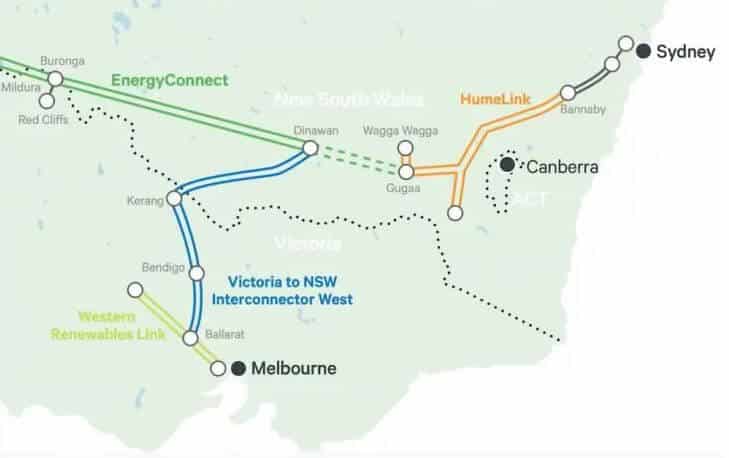The electrification of Australian households and vehicles is expected to not only reduce emissions but produce significant economic savings estimated at $40 billion per year. However, mass electrification along with distributed renewable energy generation requires a more complex grid than one based on centralised coal power generation.
Over the past two months, the federal government has begun to put its cards on the table in addressing this problem. The centrepiece of its policy for the renewables transition is $20 billion of subsidised financing via the Rewiring the Nation plan.
The plan’s first commitment came in October, with $750m in concessional finance for the KerangLink project to increase connectivity between Victoria and NSW. The interconnector is due for completion in 2028, and according to the Australian Energy Market Operator must be completed before Victoria’s ageing coal plants can go offline.

Commonwealth concessional funding will also finance 80% of the Marinus Link between Tasmania and Victoria. This will allow Tasmania to export its abundant hydroelectric energy and extensive planned wind power.
Then on Wednesday, a $7.8 billion plan was announced jointly between Albanese and the NSW Perrottet-led government. NSW is putting in $3.1 billion and the Commonwealth $4.7 billion, with $3 billion earmarked for grid upgrades to distribute power from Snowy Hydro 2.0.
The plan will also upgrade the grid around the Central-West Orana Renewable Energy Zone (REZ), the New England REZ, the Hunter-Central Coast REZ, and South-West REZ in the Riverina.
“It will support the delivery of 3,900 jobs here in NSW,” said NSW Treasurer Matt Kean. “And it will unlock the opportunity to deliver $32 billion worth of private capital that will deliver new generation, storage and firming over the next decade.”
Federal Energy Minister Chris Bowen said these projects will be “linking REZs to ensure the energy can be supplied from wherever the wind is blowing and the sun is shining, to where it’s used by households and industry.”
The federal opposition leader Peter Dutton has described these bipartisan initiatives between the federal government and state premiers to facilitate distributed, renewable-energy powered grid as a “pipe dream,” calling the plan “unbelievable and dangerous.”
Dutton advocates nuclear “small, modular reactors.” Regarding such reactors, the CSIRO recently reported they do not “see any prospect of domestic projects this decade,” due to “commercial immaturity and high costs.”
Follow Christian on Twitter for more news updates.